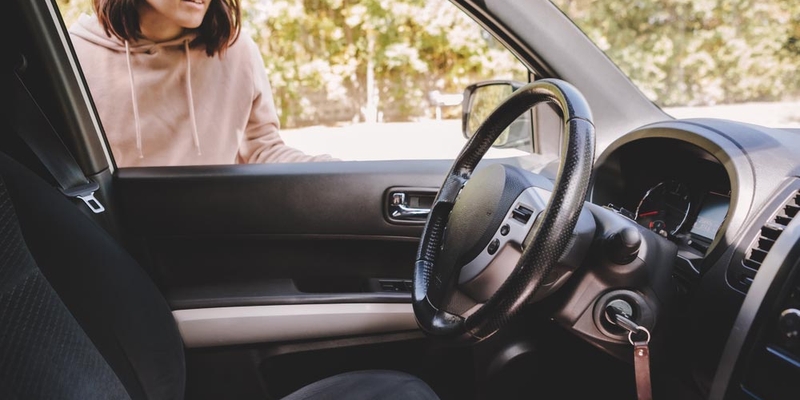
If you are not redirected within 30 seconds, please click here to continue.
Samedi: 10h – 16h HAE

If you are not redirected within 30 seconds, please click here to continue.
If you are not redirected within 30 seconds, please click here to continue.
5 Ways to Get Your Keys Out of a Locked Vehicle

Table of Contents
- Walk around your car and try opening each door and the trunk or hatchback.
- If you subscribe to a roadside assistance program either through your insurer or automaker, give them a call.
- If you don’t subscribe to roadside assistance, ask your insurer to add an auto insurance endorsement to your policy for emergency roadside assistance.
Many of us are guilty of making the mistake of accidentally locking the ignition keys to a car inside our vehicles. If this has happened to you, be proud and not ashamed! It’s such a common blunder it’s nearly a rite of passage for drivers.
Regardless, it is frustrating (even infuriating) but don’t lose your cool. It may be inconvenient but getting angry won’t solve the situation and it may prevent you from finding an obvious solution. First and foremost, though, if it’s an emergency where there is a child or animal locked in the vehicle, call 9-1-1 and get help.
If it’s not an emergency, before jumping to extreme measures which could damage your vehicle, take a deep breath, survey the situation, and try one of the following five ways to get a door open to be able to fetch your keys:
1. Check all the doors
It sounds silly, but stranger things have happened in life. Walk around your car and try opening each door and the trunk or hatchback. It’s possible one of them are not closed or didn’t lock. Also, do you have a spare ignition key at home? If so, and you’re not too far from where you live, ask a family member or trusted friend to bring it to you.
2. Call for roadside assistance help
If you subscribe to a roadside assistance program either through your insurer or automaker, give them a call. You might have to wait a while before help arrives but having a professional open your car without damaging anything is worth the wait. If you don’t subscribe to roadside assistance, you could always call a local tow truck company to do the same, although you’ll have to pay them a fee.
Don't waste time calling around for auto insurance
Use RATESDOTCA to shop around, and compare multiple quotes at the same time.
3. Call a locksmith
Use your mobile phone to search for locksmiths where you are located. Some deal with car lockouts; others do not. It can’t hurt to try to call around and inquire. Of course, you’ll have to pay the locksmith for their services when they arrive.
4. Use a pump wedge
A pump wedge is an auto entry tool you can buy at most automotive or hardware stores. It’s an inflatable tool for expanding door openings to get to a lock. Slide the uninflated wedge cuff into the top portion of the door and inflate it until there’s a small gap (but don’t overinflate it, or you may damage the car’s door). Once you’ve created a small opening, you’ll need a wire coat hanger or a similar long, skinny object like a slim jim to slide through the gap and hit the unlock button.
5. Use wood or plastic wedges
Even if you have a pump wedge, chances are it's in the trunk of your vehicle or hidden somewhere at home. Unless there's a hardware store nearby where you can buy a pump wedge, a cheaper but similar solution involves using two wood or plastic wedges. Insert one near the top corner of the door and the other at the front near the windshield. Create a gap between the door and the car's frame but do it slowly and carefully so you don't damage the door. Once you create a small opening, use a wire coat hanger or a similar long, skinny object to slide through the gap and tap the unlock button.
Add an endorsement to your policy
If you don’t subscribe to roadside assistance but want to err on the side of caution, you can ask your car insurance provider to add an auto insurance endorsement to your policy for emergency roadside assistance.
In Ontario, that endorsement is called Ontario Policy Change Form (OPCF) 35, which pays costs associated with towing, repairing flat tires, and getting keys out of a locked vehicle. In Alberta, the endorsement is known as Standard Endorsement Form (SEF) 35.
But ask your insurer what the limit is on that coverage. You can then decide if it makes more sense to purchase an annual roadside assistance plan rather than adding an emergency coverage endorsement to your policy.
Get money-saving tips in your inbox.
Stay on top of personal finance tips from our money experts!









